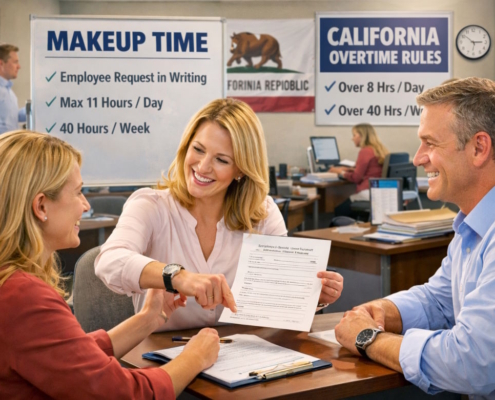What are the different types of diversity in the workplace?
The first thing an HR professional needs to do when trying to create a diverse workforce is educate themselves on the many forms diversity may take. Diversity in the workplace is essential to the success of any business today. Additionally, when assessing potential employers, 76% of job-seekers say diversity in the workplace is very important.
In order to begin managing diversity effectively at your firm, let’s examine the many forms of workplace diversity.
Diversity in the workplace is characterized by a large variety of personal attributes, including but not limited to racial and ethnic origins, cultural practices, gender roles, physical ability, religious beliefs, and age.
Diversity in the workplace fosters an environment that is both dynamic and inclusive. Additionally, fostering diversity in the workplace makes everyone feel like they belong and have something to offer the company’s success.
Laws exist to safeguard certain forms of diversity in the workplace, such as gender, religion, and color, therefore it’s crucial for human resources workers to be aware of these differences. This promotes an inclusive and courteous workplace and aids in complying with anti-discrimination laws.
The value of a diverse workforce
Increased demands and expectations for diversity in the workplace are a direct result of our increasingly interdependent global village. Companies that promote diversity in the workplace are more attractive to employees, governments, and other stakeholders.
Just a few of the many advantages of a diverse workforce are shown below.
- A boost in originality and capacity to solve problems
When people from diverse walks of life get together, a wealth of new perspectives and ideas is sure to emerge.
Actually, a Boston Consulting Group study indicated that businesses with more diversity saw a 19% increase in innovation revenue.
In addition, variety protects against groupthink, which happens when a homogeneous group fails to address problems due to a lack of various ideas and viewpoints.
Companies see an increase in innovation when they welcome diversity. Having a talented staff also improves your odds of creating innovative items and penetrating untapped markets.
- Maximized gains
Companies with a diverse workforce in terms of race and ethnicity are thirty-five percent more likely to outperform their sector average in terms of financial returns, according to research from McKinsey.
Diverse businesses generate 2.5 times more revenue per employee, according to other research. Inclusive workforces also have 35% more productive employees.
Diversity of thought, culture, and background adds up to an almost endless wellspring of originality and inventiveness. Your business will be able to expand its market reach and produce higher-quality goods as a result. Greater output and, naturally, more money in the bank are the results of all the above.
- Increased participation from workers
Greater employee engagement is a direct outcome of diverse workforces. Research shows that diverse teams outperform non-diverse groups in decision-making 87% of the time.
More than eighty-three percent of millennials report increased engagement in their work when their employer makes an effort to foster a diverse and inclusive workplace.
- Decreased staff turnover
There is less employee turnover and higher engagement when businesses prioritize diversity and inclusion. A large portion of the workforce will seek employment elsewhere if they do not feel welcome or valued. Eighty percent of workers who took part in the poll said diversity and inclusion were very important to them when deciding on an employer.
A more accepting and appreciated workforce is the result of efforts to promote diversity and inclusion. Consequently, it aids in decreasing disengagement and, eventually, turnover.
- Good company reputation
Nowadays, workers aren’t shy about talking about their experiences on the job. On review sites like Glassdoor, employees are quick to voice their opinions, both positive and negative. They’ll also talk about these things with their friends, family, and peers.
Your company’s image will benefit from fostering an inclusive and diverse culture. New talent may be cautious to accept job offers from your organization if there is a lack of diversity.
- Gaining access to a more diverse group of potential employees
You get a more varied selection of qualified applicants when you step up your diversity initiatives. When considering whether or not to accept your offer, diversity is a major factor for the majority of prospects.
For example, 39% of people who applied for jobs had turned down offers because they felt the company didn’t value diversity and inclusion.
Workplace diversity types
Identifying the many types of diversity and how they affect your employees’ daily work lives is an important first step in making your workplace more inclusive. In addition, there is a lot of overlap between these many forms of variety. This phenomenon is known as intersectionality.
There are four main categories of workplace diversity:
- Internal diversity: Made up of distinguishable characteristics like age, gender, race, physical prowess, ethnicity, and cultural identity.
- External diversity: Defined by variables other than an individual’s intrinsic qualities, such as life experiences, education, parental status, marriage, socioeconomic background, and faith.
- Organizational diversity: This refers to the range of positions and viewpoints that exist inside a business, encompassing distinctions in department, job function, departmental hierarchy, and union membership.
- Diversity of worldview: The range of viewpoints and opinions that people possess, influenced by their experiences in culture, philosophy, religion, and personal life.
“Visible” and “invisible” diversity are two more perspectives on diversity:
- Visible diversity refers to racial, age, and gender differences that are immediately apparent to the naked eye.
- Invisible diversity refers to people’s less obvious personal traits, like their socioeconomic situation, sexual orientation, and level of education.
Now, we’ll take a closer look at a few different kinds of workplace diversity.
- Diversity in culture
A person’s cultural background includes their values and traditions. The key to a diverse and inclusive workplace is attracting and retaining employees from a wide range of backgrounds, with varying cultural norms and values.
The unique perspectives and experiences brought to the table by a diverse workforce are a major source of originality and creativity.
Challenges
Cultural variety can provide a number of difficulties due to the fact that everyone lives their life in their own unique way. Conflict and mistrust can arise, for example, when people’s ideals and standards differ inside the company.
HR advice
Providing diversity training and maintaining open lines of communication with staff can help reduce the likelihood of problems arising from cultural differences.
- Diversity in race
A racially diverse workplace is one in which people of many ethnicities and nationalities work side by side. Physical traits, such as hair and skin color, are associated with racial identity. Some instances of racial diversity are people of Asian descent, Native Americans, European Americans, and African Americans.
A more ethnically diversified workforce is still a long way off, but we have come a long way.
Take this case in point:
- Among all demographics, women of color have the lowest rate of employment.
- The BLS reports that White people make up 77% of the US workforce.
- Out of 500 corporations in the Fortune 500, just 0.4% are open about their initiatives to increase racial and ethnic diversity.
As a result of racial diversity, your organization has access to a more varied and talented workforce. Additionally, it facilitates social cohesiveness and opens doors to emerging markets that mirror the racial diversity of your staff.
Challenges
Achieving inclusion is a whole other ballgame, even though most companies put money into racial diversity. One example is the disparity in the number of leadership positions held by members of underrepresented groups. Consider this: of the Fortune 500 businesses, just six have a Black chief executive officer.
Furthermore, ethnic diversity in the workplace is still an issue. For example, a quarter of Black, Latinx, or Hispanic workers say they’ve experienced prejudice on the job.
HR advice
Companies should think about using blind hiring as a way to fight biases. One way to begin is by removing any personally identifiable information from resumes before reviewing them.
- Diversity in gender
When people of different genders make up a workforce, we say that there is gender diversity. Hiring more people from underrepresented groups is only part of the solution to gender diversity. It also means making sure that pay, raises, and chances to learn are fair for everyone.
There are two aspects to gender diversity:
Gender identity refers to a person’s subjective perception of their biological gender, which might or might not match their biological sex at birth.
The term “gender expression” refers to the outward display of a person’s gender identity, which can take many forms, including actions, hairstyle, dress, and vocal intonation.
Challenges
Making their organizations genuinely diverse in terms of gender is a challenge for many. When it comes to pay, advancement, and advancement opportunities, for example, they may have trouble achieving gender parity even while they recruit more people from underrepresented groups.
As an illustration, by 2023, the median weekly wage for women was 84% of the median wage for men. The ratio of women to men in promotions is 86 to 100.
Additionally, 42% of American women have reported experiencing some form of gender discrimination. Nearly half of all workers in the United States are women (46.6%), therefore we are making progress in the right way.
Obviously, sexism in the workplace affects more than just women. It is important to include the experiences of transgender, non-binary, and gender nonconforming individuals to eliminate any type of discrimination against them.
- Diverse sexual orientations
One definition of sexual orientation is an innate preference for romantic relationships. A diverse workforce that includes persons of all sexual orientations is what we mean when we talk about sexual orientation diversity. There are many different sexual orientations, such as bisexual, homosexual, lesbian, asexual, pansexual, and heterosexual.
Everyone has their own unique sexual orientation. On the other hand, you may make your staff feel appreciated and welcome by encouraging diversity in sexual orientation. As a result, staff members are more invested and get more done.
Challenges
Forty percent or more of workers believe their companies are underinvesting in the LGBTQ+ community. In addition, members of the LGBTQ community often experience prejudice and harassment on the job.
- Diversity in languages
A workforce that is linguistically diverse consists of individuals who speak a variety of languages. The United States is home to speakers of more than 350 different languages, with English being the de jure standard.
Your organization will be more vibrant and distinct with linguistic diversity. Additionally, it provides an opportunity for your business to provide clients with more tailored service.
For instance, despite English’s dominance, some clients may feel more at ease speaking a different language, like Spanish. With Spanish-speaking staff, customers can get individualized attention in the language they prefer.
Challenges
When your team members speak different languages, it can be difficult to communicate with each other. Workers may become irritated and less productive as a result of these obstacles.
- Diversity in socioeconomic status
When people in an organization come from a variety of socioeconomic backgrounds, it shows in their perspectives on wealth, education, and social standing. There is a wide range of economic levels, professions, living situations, and educational backgrounds represented here.
Socioeconomic diversity, like cultural diversity, enriches your business operations with a variety of viewpoints and experiences. Creativity and innovation in the workplace are both boosted as a result.
Challenges
Discrimination and bullying may arise on the job as a result of your employees’ varying socioeconomic backgrounds.
HR advice
Establish uniform “fair treatment policies” to guarantee equal treatment of all employees.
- Diversity in geography
Geographical diversity is the practice of recruiting people from a variety of places, including other countries.
Diversity like this opens up a huge talent pool for your company. A broader worldview and better problem-solving skills are two other benefits.
Challenges
The logistical hurdles are one of the main obstacles to geographical diversity. For instance, there are a lot of logistical considerations to take into account when hiring a foreign national, such as visa requirements. These additional costs might be rather difficult for a new business.
- Diversity in disability
A disability-inclusive workplace welcomes qualified candidates with or without a history of mental or physical impairments. It also means welcoming workers with all their unique mental and physical qualities, rather than just ignoring them.
People with disabilities can do the same amount of work as anyone else. They have the potential to bring fresh perspectives and ground-breaking ideas to your organization.
Challenges
People with disabilities may face prejudice and a lack of acceptance from some employers. Despite the fact that 90% of businesses claim diversity is important, only 4% consider hiring persons with disabilities to be diversity.
HR advice
Make accommodations for those with impairments and encourage them to apply for jobs.
- Diversity in spiritual and religious views
When you hire people from different religious backgrounds, or none at all, you’re embracing religious diversity.
There will be more empathy and understanding in the workplace if we respect people’s religious beliefs. One way to show respect for an employee’s religion is to provide them with resources like prayer rooms, floating holidays, and the ability to wear headscarves and rosaries. Workers’ involvement levels rise as a result of their increased sense of belonging and acceptance.
Challenges
Distrust and animosity can develop when people’s religious and spiritual views differ. But you can fight back by spreading the word about tolerance and the importance of honoring people’s spiritual and religious practices.
- Diverse generations and ages
When a business collaborates with workers from different generations, it creates age and generational diversity. Members of Generations X, Z, Millennials, and Baby Boomers are common in a diverse workplace.
An organization benefits from having a workforce that spans multiple generations. Gen Zers can enlighten Baby Boomers on future technologies, for instance. In contrast, Baby Boomers have a wealth of industrial experience that spans decades that they may pass on to younger generations.
Challenges
People of different generations bring unique perspectives, linguistic abilities, and work habits to the table. Disagreements and communication breakdowns may ensue if you ignore and reject these distinctions.
Helpful suggestions for human resource managers on handling workplace diversity
Beamery found that 75% of businesses prioritize diversity, equity, and inclusion. Your business can also play a role in the transformation.
As an HR professional, you can use the six suggestions below to better oversee and improve diversity:
Promote an inclusive environment: Work on diversity, but don’t forget to work on inclusion as well. If you want to hire more women, for instance, you should make sure they have equal access to training, compensation, and advancement possibilities.
Give your staff diversity training: Create awareness programs to teach people to appreciate and respect one another’s unique qualities.
If you’re having trouble getting past the inherent biases in the hiring process, try blind hiring instead. One option is to practice “blind hiring,” which does not take into account a candidate’s ethnicity, gender, sexual orientation, age, socioeconomic position, or culture while making a hiring decision.
Build avenues for employee feedback: Make sure your colleagues can easily reach you and feel comfortable sharing their thoughts and feelings on DEIB in the workplace. There are a variety of ways that employees can provide input, for as through scheduled town hall meetings, organized focus groups, diversity-focused questionnaires, and email addresses specifically for diversity problems.
Be fair and respectful to all employees; this includes those who differ from you in terms of gender, color, religion, age, socioeconomic background, or culture. You need to be prepared to take action against anyone responsible for harassing or discriminating against them. It shows that you value your employees and will not stand for any form of bias.
Look at things through an intersectional lens: People’s racial, gender, sexual orientation, and socioeconomic identities all interact to shape their lives and the chances presented to them. By taking into account the specific obstacles and prejudices that people may encounter as a result of their many identities, this method promotes DEIB tactics that are both fair and effective in the workplace.
In conclusion
- When employees come from a variety of backgrounds, it shows in the company’s culture.
- Employees of various sexes, ethnicities, ages, abilities, faiths, and sexual orientations are welcome in a diverse workplace.
- Profitability, employee engagement, and retention are all positively impacted by organizations’ investments in diversity initiatives.
- Increasing diversity awareness and fostering an inclusive and equitable work environment are two ways in which companies can support diversity.































